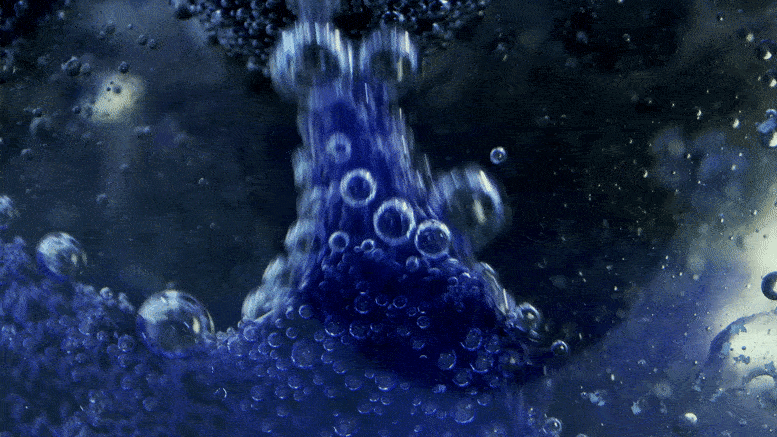
Researchers developed a catalyst that not only removes contaminants like medications from wastewater but also produces hydrogen fuel as a valuable byproduct.
Hydrogen is a pollution-free energy source when it’s extracted from water using sunlight instead of fossil fuels. But current strategies for “splitting” or breaking apart water molecules with catalysts and light require the introduction of chemical additives to expedite the process. Now, researchers reporting in ACS ES&T Engineering have developed a catalyst that destroys medications and other compounds already present in wastewater to generate hydrogen fuel, getting rid of a contaminant while producing something useful.
Harnessing the sun’s energy to split water to make hydrogen fuel is a promising renewable resource, but it is a slow process even when catalysts are used to speed it along. In some cases, alcohols or sugars are added to boost the rate of hydrogen production, but these chemicals are destroyed as hydrogen is generated, meaning the approach is not renewable.
In a separate strategy, researchers have tried using contaminants in wastewater to enhance hydrogen fuel generation. While titanium-based catalysts worked for both removing contaminants and generating hydrogen, the efficiencies were lower than expected for both steps because of their overlapping reaction sites. One way to reduce such interferences is to make catalysts by fusing together different conductive metals, thus creating separate places for reactions to occur. So, Chuanhao Li and colleagues wanted to combine cobalt oxide and titanium dioxide to create a dual-functioning catalyst that would break down common drugs in wastewater while also efficiently converting water into hydrogen for fuel.
To make the catalyst, the researchers coated nanoscale titanium dioxide crystals with a thin layer of cobalt oxide. Initial tests showed that this material didn’t produce much hydrogen, so as a next step, the team spiked this dual catalyst with 1% by weight of platinum nanoparticles — an efficient though expensive catalyst for generating hydrogen. In the presence of simulated sunlight, the platinum-impregnated catalyst degraded two antibiotics and produced substantial amounts of hydrogen.
Finally, the team tested their product on real wastewater, water from a river in China and deionized water samples. Under simulated sunlight, the catalyst stimulated hydrogen production in all three samples. The greatest amount of hydrogen was obtained from the wastewater sample. The researchers say their catalyst could be a sustainable wastewater treatment option by generating hydrogen fuel at the same time.
Reference: “Recovering Hydrogen Energy from Photocatalytic Treatment of Pharmaceutical-Contaminated Water Using Co3O4 Modified {001}/{101}-TiO2 Nanosheets” by Yaoyao Wu, Yuqiong Li, Hejing Hu, Guoshen Zeng and Chuanhao Li, 17 February 2021, ACS ES&T Engineering.
DOI: 10.1021/acsestengg.1c00003
The authors acknowledge funding from National Natural Science Foundation of China, Science and Technology Planning Project of Guangdong Province, Fundamental Research Funds for the Central Universities from Sun Yat-sen University, and the Research Fund Program of Guangdong Provincial Key Laboratory of Environmental Pollution Control and Remediation Technology.








“Hydrogen is a pollution-free energy source …”
That remains to be seen! If hydrogen were to be substituted for fossil fuels, the waste product would be water vapor, increasing the relative humidity, particularly in urban environments. Besides affecting the local heat index, it might act to encourage the growth of humidity-loving organisms like fungi. The spores given off by the fungi could be a health hazard, and decorative paneling on buildings could be attacked by the mold, increasing the maintenance costs and contaminating the immediate area with things like chlorine, depending on what is chosen to suppress the mold.
It is always possible to have too much of a good thing.
I’ll take more humidity over toxic fumes, smog, and global warming everyday of the week.
There won’t be increased humidity, since it’s using wastewater to create the hydrogen. This wastewater would evaporate naturally regardless, so whether it evaporates or is converted and burned, either way it creates the same humidity.
They extract the Hydrogen from it leaving only the O2 byproduct. This isn’t creating additional water vapor….
You should read past the first paragraph.
Clyde Spencer expressed concern about valid scenarios. There is no reason to attack him. The point about the water/hydrogen/energy cycle is an excellent argument. The fact is that water vapor is far less damaging to living organisms. A separate fact is that water vapor cycles back to it’s liquid form rather rapidly as opposed to CO2 and CO, both of which remain in the atmosphere for extended periods. As far as I am concerned cost benefit analysis favors hydrogen.
Let’s not forget the second “leftover” from the split…pure 02….no brainer..
If used in cars they would have to have a closed recycling system so any water vapour produced can be reused